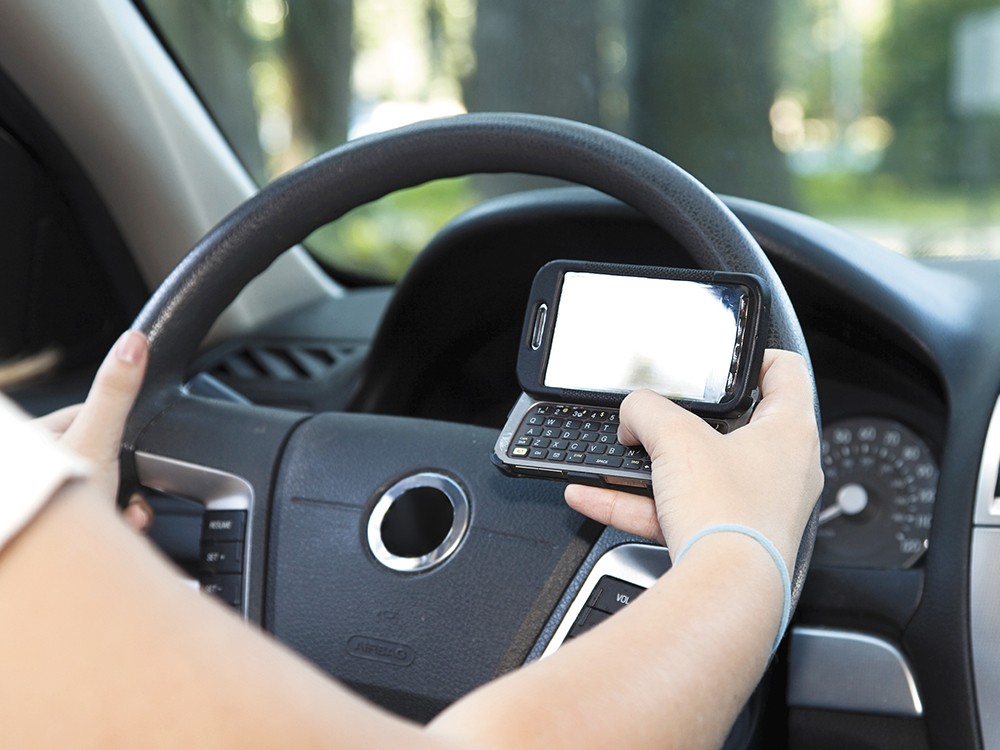Taylor Sauer’s final Facebook status update predicted her sudden, violent death.
“I can’t discuss this now. Driving and facebooking is not safe! Haha,” she wrote.
Shortly thereafter, the 18-year-old Caldwell, Idaho, teen rear-ended a slow tanker truck at 80 miles an hour on Idaho’s Interstate 84, then was hit by another semi-truck. Idaho State Police says there was no evidence of any braking, but cellphone records showed she had been posting from the phone about once every 90 seconds.
Her death sent her parents, Clay and Shauna, on a mission to reduce texting while driving.
“We just thought, there’s no way we can put our heads in the sand and pretend this is not what happened,” Shauna Sauer says. “I think she would be glad for what we’ve done with it.”
Amid tears and hoarse voices, they spoke at high schools and went on the Today show with their daughter’s story. They urged the Idaho Legislature to pass a law banning texting while driving. In previous years, legislators like former state Rep. Raul Labrador had fought against such a ban, arguing that since Idaho already had an inattentive driving law, a texting law wasn’t needed. But in 2012, possibly thanks to the Sauers’ testimony, a law was passed.
Over a year after it passed, however, evidence suggests the law might not have worked liked the Sauers had hoped.
To start with, the law appears to have barely been enforced.
Stu Miller, spokesman for the Kootenai County Sheriff, says his office and the Coeur d’Alene Police only wrote 16 citations combined in that first year. The Idaho State Police only wrote 66 tickets. By contrast, during that same period the state police wrote 471 tickets for inattentive driving.
It’s not an easy law to enforce. Dialing up to 10 digits to make a phone call while driving is still legal, where tapping out “kthnxbye” to send a text message is not legal. It’s hard for a police officer, looking in through a car window, to tell the difference. Proving it in court can require subpoenaing records from phone companies.
So instead, Idaho State Police spokeswoman Teresa Baker says police are more likely to write up texters with another violation, one easy to spot, like failure to signal or an improper lane change.
After all, the anti-texting law carries only minor consequences. “It’s a non-moving violation,” says Baker. “It doesn’t put points on the driver’s record. It doesn’t increase the driver’s insurance rate.”
The fine for texting while driving is a mere $85, while the easier-to-enforce inattentive driving violation is punishable by up to 90 days in jail and a $300 fine.
Sauer says the original bill presented to her was tougher on violators, but she saw it watered down as it made its way through the Legislature. “It’s a little slap on the hand, it really honestly is,” Shauna Sauer says. “But at least it’s something. … Sometimes you’ve got to take baby steps.”
She’d prefer the state impose a hands-free driving rule.
But Craig Chamberlin, spokesman for the Spokane County Sheriff’s office, says Washington state’s hands-free driving law appears to have lost its initial power. “When it first became a primary offense in July of 2010, you barely saw anyone on their cellphone or texting,” Chamberlin says. But drivers eventually picked the habit back up. “I see people becoming more creative in how they’re hiding their phones. You see a lot of people driving down the road with a kink in the left side of their neck because they’re holding their phone [with their heads].”
Meanwhile, studies of distracted driving have come to surprising conclusions. In 2005, as society was becoming saturated by cellphones, the Insurance Institute for Highway Safety interviewed drivers after crashes and compared their statements with phone company data. They found it didn’t matter if the device was hands-free or handheld: Drivers were four times more likely to crash while on the phone or sending a text message.
With the use of cellphones skyrocketing, experts braced themselves for an epidemic of vehicular disaster. Instead the opposite happened.
“Over the last 10 years, police-reported crashes have been going down as cellphone use has dramatically increased,” says Russ Rader, spokesman for the Institute. “Researchers can’t account for the fact that the wave of crashes we expected didn’t materialize.”
Yet while the overall trend has been fewer crashes, in three out of every four states that enacted no-texting laws, something even stranger happened: The number of crashes went up.
“In order to avoid detection, drivers may be moving the phone below window level, to their lap, to hide their fact that they’re texting,” Rader says. “New laws may not be an effective strategy at all.”
But new technology might be. Volvo is using a “City Safety System” in its cars, which automatically applies the brakes in slow-moving vehicles if the vehicles ahead suddenly slow down. And Sauer just spoke at a press conference last week for the Ford Motor Company, announcing technology for young drivers that wouldn’t turn on the radio unless the driver’s seatbelt was buckled, would send alert parents if their child was speeding, and would allow parents to block most text messages and calls on their child’s cellphone whenever the child was driving.
“I got all choked up thinking about this big company that would make a car that would [protect] more of our kids,” Sauer says.
Yet kids aren’t the only ones at risk. Morning drivers of all ages have stubble to shave, makeup to put on, fast food to eat, coffee to spill, kids to yell at in the backseat, radio knobs to adjust and daydreams to get lost in.
“If people think this is just a teenage problem, they’re nuts,” Sauer says. “This is a social problem.”






















